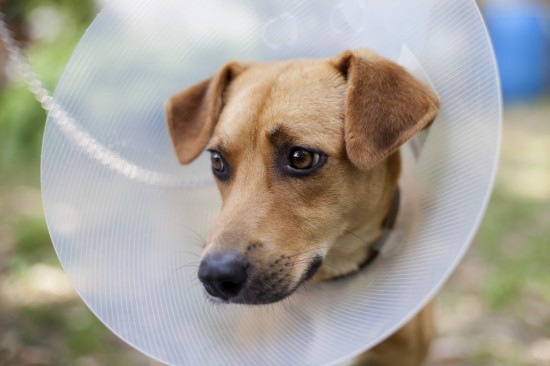
Fleas and ticks are responsible for billions in chemical/pesticide industry sales every year. However, as the U.S. Environmental Protection Agency imposes costly and strict guidelines for insecticides, flea and tick treatments are becoming too expensive for manufacturers to produce. This cost and the trend for more pet parents to seek healthy alternatives has caused companies to get creative and bring out “natural” flea and tick products. Are these “natural” products any safer than insecticides for your pets?
The Natural Resources Defense Council with its Green Paws Flea and Tick Products Directory reveals the levels of safety for the toxic flea and tick products and now it is revealing the truth about herbal or natural products too.
The safest products contain cedarwood, lemongrass, peppermint, rosemary and thyme. But allergic reactions in people and severe reactions in cats and dogs have been reported when products that contain citrus, cinnamon, clove, d-limonene, geranium, tea tree, lavender, linalool, bay, eucalyptus and rue oils are used too often. Pennyroyal oil can cause seizures, coma and even death in animals.
Several essential oils are known to cause allergic reactions, including severe dermatitis in people or pets. More severe reactions have been observed in pets, especially cats, including vomiting, salivation, muscle tremors, seizures, and death in a few cases. Little information is available on the efficacy of these oils for flea control.
A natural bug spray on the market contains sage, orange, eucalyptus, rosemary and tea tree oil to repel pests on pets as well as on horses and people. Keep in mind that no current flea and tick product is 100% effective.
Pet Parents, who have safety in mind, must rely on the latest science when shopping for natural products rather than the old reference tome used by naturalists of yesteryear even though from the folk medicine point of view, these are safe and effective. All pesticides should be used with caution and in consultation with a veterinarian.
Pets cannot report when they’re being poisoned at low doses. It is up to you as a vigilant pet parent to monitor and understand your pet’s health and behavior and report adverse effects of the products you use.
You can also try these other non-toxic alternatives:
• Use natural vegetable based soap or shampoo rather than insecticides to bathe your pet. Bathe often. Adding a few drops of neem or tea- tree to mild dog shampoos may also be effective. Dip any fleas on your combs or brushes in a glass of soapy water to remove them.
• Use a mechanical tick remover such as an OTOM or Ticked OFF that is simple and easy to use.
• Vacuum frequently floors, carpets, furniture, crevices and cracks in the area where pets sleep and spend time, daily if necessary. Dispose of the sealed bag properly outside the home or burn it.
• Wash pet bedding weekly.
• Cedar shampoo, cedar oil and cedar-filled sleeping mats are commercially available. Cedar repels many insects including fleas. Again, be aware that your pet will be breathing in cedar vapors from bedding so watch for any adverse signs.
• NOTE: Essential oils are toxic to cats, especially tea tree, which their livers cannot process.
Shop wisely:
Natural flea and tick treatments come in many forms, including food additives but you, as a health conscious pet parent must understand that not all of these “natural” products are safe or effective for your pet. Look beyond the glowing adjectives of the flea-free advertising to keep your pet healthy and happy and free of fleas and ticks.
 Laryngeal Paralysis In Dogs Explained
Laryngeal Paralys
Laryngeal Paralysis In Dogs Explained
Laryngeal Paralys
 Why Is My Dog Coughing ? Ten Potential Reasons
Why Is My Dog Cou
Why Is My Dog Coughing ? Ten Potential Reasons
Why Is My Dog Cou
 Dog-friendly Hotels - Some Caveats To Note
Dog-friendly Hote
Dog-friendly Hotels - Some Caveats To Note
Dog-friendly Hote
 5 Good Reasons To Sponsor A Dog
5 Good Reasons To
5 Good Reasons To Sponsor A Dog
5 Good Reasons To
 Helping Your Dog To Deal With Wearing A Buster Collar
Helping Your Dog
Helping Your Dog To Deal With Wearing A Buster Collar
Helping Your Dog
Copyright © 2005-2016 Pet Information All Rights Reserved
Contact us: www162date@outlook.com